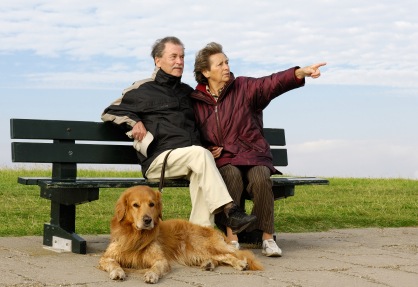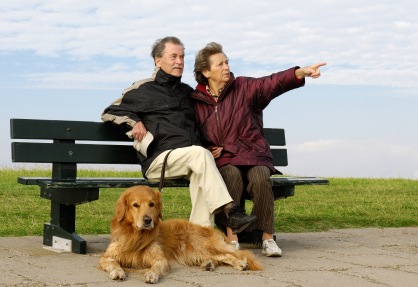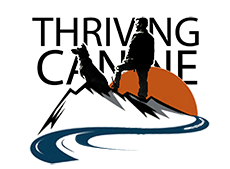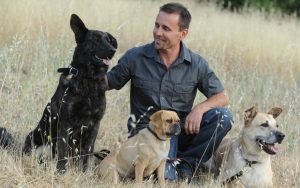 Socialize, socialize, socialize! Any dog owner has heard these words before. Vets, friends, books, TV shows…they all say, “you’ve got to socialize your dog!” It’s like a dog training mantra but what the heck does that really mean? In a nutshell, it means to expose your dog to all the stuff that the big, wide-world has to offer – sights, sounds, smells, textures, people, animals, cars, skateboards, bikes, stairs, etc…..and all the varieties that these things come in. That is the short version but it does get a little more complicated than that. Exposure itself can cause as many problems as it solves if gone about carelessly. This article will be looking at some socializing basics as well as the three best ways to socialize your dog so he can be a well-adjusted and welcomed canine citizen.
Socialize, socialize, socialize! Any dog owner has heard these words before. Vets, friends, books, TV shows…they all say, “you’ve got to socialize your dog!” It’s like a dog training mantra but what the heck does that really mean? In a nutshell, it means to expose your dog to all the stuff that the big, wide-world has to offer – sights, sounds, smells, textures, people, animals, cars, skateboards, bikes, stairs, etc…..and all the varieties that these things come in. That is the short version but it does get a little more complicated than that. Exposure itself can cause as many problems as it solves if gone about carelessly. This article will be looking at some socializing basics as well as the three best ways to socialize your dog so he can be a well-adjusted and welcomed canine citizen.
Socialization Starting Tips
- Positive Experiences – Most of your dog’s experiences with the world should be positive. This creates confident and happy dogs. Of course the reality is that not everything your dog comes across will be enjoyable. Occasional, mild levels of stress (such as being startled) that the dog can easily and quickly recover from are okay but exposure should be positive overall.
- Avoid Overexposure – Bad experiences can cause trauma which can yield lasting and possibly even permanent negative effects. Pay attention to your dog, give him a break if he is getting overloaded and don’t push him into an overly stressful situation.
- Start Early – Begin as young as possible. The “critical socialization period” lasts from approximately eight to sixteen weeks of age. This small window is the time when dogs are most able to adapt to new environments. I know, this is not always possible but if you are starting with a pup this is your best bet and there are plenty of ways to do this safely…keep them on your lap, in a carrier or on a blanket for example. Puppy classes are generally a safe way to socialize with other dogs. There is no need to completely quarantine a puppy during this period.
The Three Paths
- Interactive – The path most people think of when talking about socialization is letting their dog be interactive with the environment. Playing with other dogs, people petting or giving him treats, sniffing around at the park, etc. These are all great as long as the dog is enjoying the interaction but it should only be one part of a holistic socialization program. Why? Because many dogs that are only socialized this way begin to think, “It’s my world and the rest of you are just living in it.” They may jump on people, get over-excited at the slightest thing, pull on-leash or just generally misbehave or act up in public, especially when they don’t get their way. Dogs that are only socialized this way tend to be non-responsive to their human when distracted in the slightest, which brings us to number two.
- Engaging – The second most common path of socialization is when the dog is engaging with you rather than the environment. Playing fetch or doing training exercises at a park full of people, dogs and squirrels, for example. This type of interaction creates a dog that’s “all about us” rather than “all about me.” Having a dog that will stay engaged with you in any situation is the gold standard that makes off-leash obedience a cinch. Using treats or toys is great but make sure to put a lot of yourself into it as well. It should be about the relationship, not just treats or toys. Use a lot of verbal and physical praise and be fun! Check out my article on what motivates our dogs for more information on this subject.
- Observatory – Last, but certainly not least, is the Observatory Path to a well-socialized dog or what I like to call the Art of Doing Nothing. What this means is that you and your dog are just hanging out and watching the world go by. Find a nice bench or lay out a blanket at the park and just chill. (That’s slang for kick back or relax.) Fido will get no attention from strangers walking by, no playing with dogs or sniffing around, no fetch or frisbee….just a whole bunch of nothing going on. I know, welcome to snoozeville right? That’s why nobody thinks of this one. Well, that and the fact that most people laugh at the suggestion and say, “Yeah right, like my dog can do that!” To this I say, “Yes, they can!” Some dogs may have a harder time than others but they can all learn to do it. The Art of Doing Nothing is important because it builds impulse control and gives your dog an on-off switch. Dogs that learn to “do nothing” are able to go more places and therefore have a more fulfilling life.
Warning: If you are dealing with aggression, fear or any extreme behavior problem please consult a professional before attempting any of these three paths of socialization.
So there you have it folks, the three paths to a well-socialized dog. All of them have tremendous value but how much of each you use will vary according to your training goals. A friendly pet dog vs. a police dog vs. a guide dog for the blind….some will get more focus on greeting people while others will focus more on handler engagement or just enjoying the view in a very non-reactive fashion. Please feel free to mix things up, try them all and create the right recipe for you and your dog.
Say hi to Rover from Uncle Chad and go socialize your dog!
Chad Culp – Certified Dog Trainer, Canine Behavior Consultant, Owner of Thriving Canine.
© Thriving Canine 2013
We offer in-person training in the San Francisco Bay Area as well as virtual consults anywhere in the world.
Thriving Canine University private Facebook group. (please read the rules before joining)



